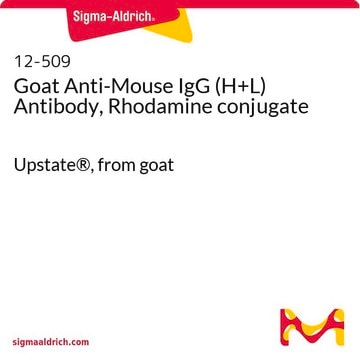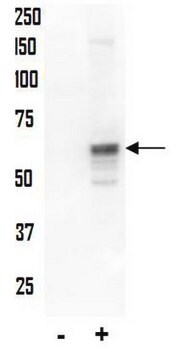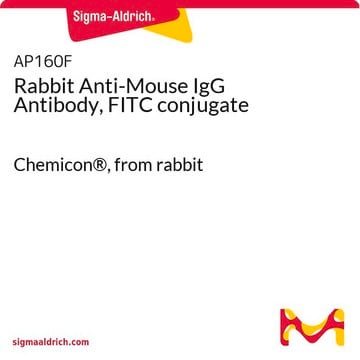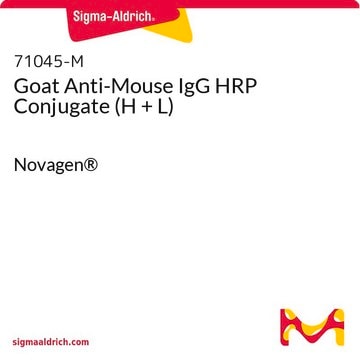12-506
Goat Anti-Mouse IgG (H+L) Antibody, FITC conjugate
Upstate®, from goat
About This Item
Recommended Products
biological source
goat
Quality Level
conjugate
FITC conjugate
antibody form
affinity purified immunoglobulin
antibody product type
secondary antibodies
clone
polyclonal
species reactivity
mouse
manufacturer/tradename
Upstate®
technique(s)
flow cytometry: suitable
immunocytochemistry: suitable
immunofluorescence: suitable
immunohistochemistry: suitable
shipped in
dry ice
target post-translational modification
unmodified
Specificity
Immunogen
Application
Emission Wavelength: 528nm
Fluorochrome/Protein Molar Ratio: 3.2
Suitable for immunomicroscopy and flow cytometry or FACS analysis, as well as other antibody based fluorescent assays requiring lot-to-lot consistency. Optimal antibody dilution should be determined by the researcher.
Secondary & Control Antibodies
Whole Immunoglobulin Secondary Antibodies
Quality
Physical form
Storage and Stability
Legal Information
Disclaimer
Not finding the right product?
Try our Product Selector Tool.
Signal Word
Danger
Hazard Statements
Precautionary Statements
Hazard Classifications
Acute Tox. 3 Dermal - Acute Tox. 4 Inhalation - Acute Tox. 4 Oral - Aquatic Chronic 2
Storage Class Code
6.1C - Combustible acute toxic Cat.3 / toxic compounds or compounds which causing chronic effects
WGK
WGK 3
Certificates of Analysis (COA)
Search for Certificates of Analysis (COA) by entering the products Lot/Batch Number. Lot and Batch Numbers can be found on a product’s label following the words ‘Lot’ or ‘Batch’.
Already Own This Product?
Find documentation for the products that you have recently purchased in the Document Library.
Our team of scientists has experience in all areas of research including Life Science, Material Science, Chemical Synthesis, Chromatography, Analytical and many others.
Contact Technical Service










